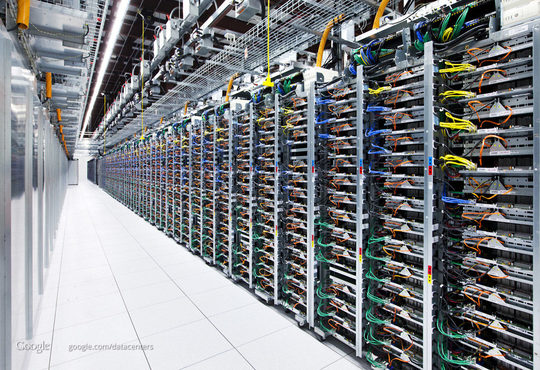Role of DC and Servers in Today's Business
Mani Kant Singh, Head - IT & CISO, Orbis Financial Corporation
 Business automation has made major impact on processes having more technology touch points. The day’s market and trends in changing industry scenario has compelled the organization to have a new look regarding their data center strategies. The influential factors such as the aging data, cost-consciousness eco-system, higher efficiency, mitigate the risk of not meeting the futuristic business requirements and so forth have indeed made the organizations to look beyond the traditional technology and transform for the all good.
Business automation has made major impact on processes having more technology touch points. The day’s market and trends in changing industry scenario has compelled the organization to have a new look regarding their data center strategies. The influential factors such as the aging data, cost-consciousness eco-system, higher efficiency, mitigate the risk of not meeting the futuristic business requirements and so forth have indeed made the organizations to look beyond the traditional technology and transform for the all good.
The efforts to meet customers’ ever-growing demands, cost-competency, and increase operational efficiency have led to redefining of the Data Centre [DC] strategy. Apart from innovative business services, there is a need to deliver optimal data center infrastructure capabilities for internal customers as well. Evidently, DC has become the lifeline of any organization impacting the performance, efficiency and security with reduced costs. As a result, the organizations are looking forward to a fabric-based infrastructure, modular designs, cloud computing, and so forth in order to optimize their resources.
Moreover, every customer is determined that any investment on DC or Servers must have direct/indirect impact on P&L of their organization. Breaking the mundane practice of delayed ROI, there have been considerable improvements on ROI from day one of its implementation reflected as excess of USD in millions. And, moving from keeping the lights on to delighting the customers is one the KPI of CIO/CTO.
Henceforth, almost every organization is now shifting their focus from owned infra to hosted infra which ensures user ease and manageability. To achieve, there must be a strong & efficient DC. Any uncertain payloads on the network and business processes can be easily handled with SDDC. These SDDC have high level of automation with elasticity to grow as per requests. These SDDC gives the flexibility to pay per use and acts a game changer for CXO.
Nevertheless to say, the investments on DC can be either on premise or on cloud. Compatibility & security are the biggest challenges in cloud infra. While every technology comes with a rider, Hybrid DC/Servers gives freedom of integration, collaboration, cost containment, optimized resources & ease of manageability against it involves tools and special skills for managing the technology.
However, the fight to achieve more with less has been prime concern in these DC investments. Every single effort is taken to investigate the value proposition in DC investments and the duration of ROI. There has been significant change in the strategy of cost investment on DC/servers which ensures longer durability and efficiency. It wouldn’t be wise to calculate value at the cost of “happy returning customers”. It takes many lifecycles and components to achieve this.
Moving further, the major challenges associated with the Data Centers include Single window with automated management framework; silos of applications; locked-in vendor driven designs; issues with agility and scalability.
At this juncture, there is a quest for transformational programs with TCO reduction; proven methodologies and certified tools for data center dependency; reference architectures that are industry specific; maximize the existing technology; single and multi-tenant Cloud services, and more.
A few of the recommendations to enhance IT agility and the business velocity includes:
• On-demand service model which reduces the time from months to just a few hours
• Supported business growth strategies, unique solutions to show capability improvements
• Effective utilization of storage resources through 3, 5-tiered software defined storage
• Scale-out storage which supports on-demand requests
• Take advantage of the servers with storage refresh cycle at regular intervals
• Handle data deduplication on primary servers
In a nutshell, in order to improve the velocity, quality, and efficiency of an organization, it is crucial to redefine the existing data center strategy built on practices established over the organization’s life.
























































.jpg)
.jpg)








.jpg)

.jpg)

.jpg)
.jpg)



.jpg)


.jpg)





























.jpg)

.jpg)
.jpg)

.jpg)
.jpg)

































.jpg)

.jpg)



















.jpg)
















.jpg)












































































































